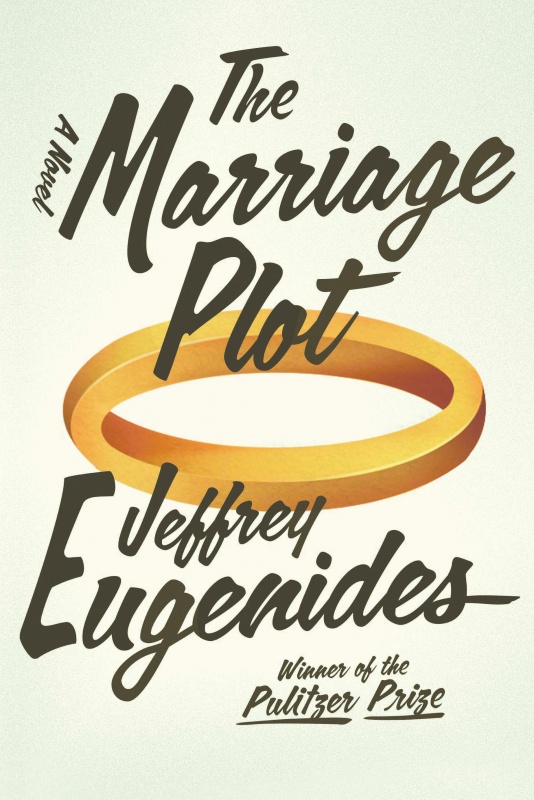22 Apr / The Marriage Plot by Jeffrey Eugenides

 “To start with, look at all the books.” Thus opens Jeffrey Eugenides third and latest novel with another memorable first-line zinger – most definitely three for three. Alas, what follows that fabulous start isn’t nearly quite as zingy.
“To start with, look at all the books.” Thus opens Jeffrey Eugenides third and latest novel with another memorable first-line zinger – most definitely three for three. Alas, what follows that fabulous start isn’t nearly quite as zingy.
So far, Eugenides is averaging a new title about every nine years. The Virgin Suicides (1993) shocks immediately: “On the morning the last Lisbon daughter took her turn at suicide – it was Mary this time, and sleeping pills, like Therese – the two paramedics arrived at the house knowing exactly where the knife drawer was, and the gas oven, and the beam in the basement from which it was possible to tie a rope.” Too bad I felt like I had to slog through the rest of the shockers. The Pulitzer-winning Middlesex (2002) begins with another attention grabber: “I was born twice: first, as a baby girl, on a remarkably smogless Detroit day in January of 1960; and then again, as a teenage boy, in an emergency room near Petoskey, Michigan, in August of 1974.” Unlike Suicides, that proved to be an enormously rewarding read I’m still savoring.
So when Marriage hit shelves last fall, I got nervous; something about disappointing follow-up titles puts me in an irrationally foul mood for far too long. Eventually I succumbed to veteran David Pittu’s narration stuck in my ears during one of my high-mileage running weeks. That the book itself remained unopened might give you a hint as to my final verdict.
Here’s the general gist: Three undergrads – privileged, well-read Madeleine; brilliant, unbalanced Leonard (whom Pittu inexplicably voices with a distracting Jack Nicholson-like growl); and regretful, searching Mitchell – spend four years at Brown, graduate (more or less), and attempt to establish themselves as young adults in the real world. Bland Madeleine never gets over her anxiety over being so normal. Mercurial Leonard succumbs to his genetics. Charming Mitchell travels the world trying to find himself. In case you were waiting, the marriage part of the plot doesn’t kick in until the last 70 or so of the hefty 400+ pages (I’ll be good: no spoilers here!).
Being a lit major might enhance your reading experience – you could, for example, enjoy deconstructing why semiotics becomes an embodiment for a professor’s midlife crisis (leather jacket and all!). Barring that, you could create quite the literary laundry list populated by just about every canonic dead white man and (thankfully) more than a few female counterparts; the book’s first paragraph alone includes Wharton, James, Dickens, Trollope, Austen, Eliot, the Brontë sisters, Lawrence, Levertov, and Colette … and, of course, given a protagonist named Madeleine, you’ll eventually find mention of Ludwig Bemelmans, as well.
In spite of all that erudition – “look at all the books” indeed!! – the triangulated life stories never move beyond the flat, printed page (and drones on for 15.5 hours stuck in the ears). Ah, well … at least I’ve got another eight years left to get over my foul mood of disappointment as I wait for that next Eugenides title – my current calculations have me convinced it should be remarkable.
Readers: Adult
Published: 2011

Reblogged this on bookgirl1987thoughts.